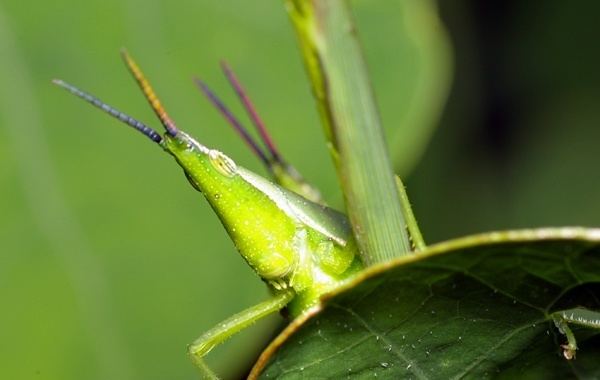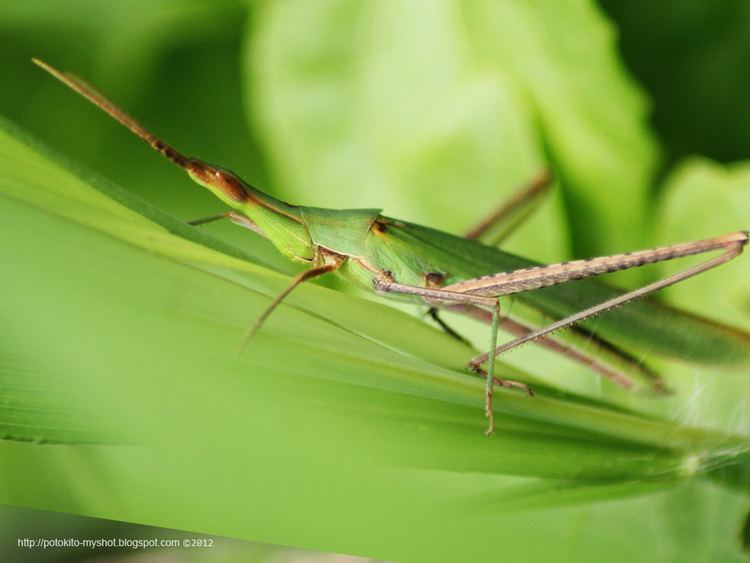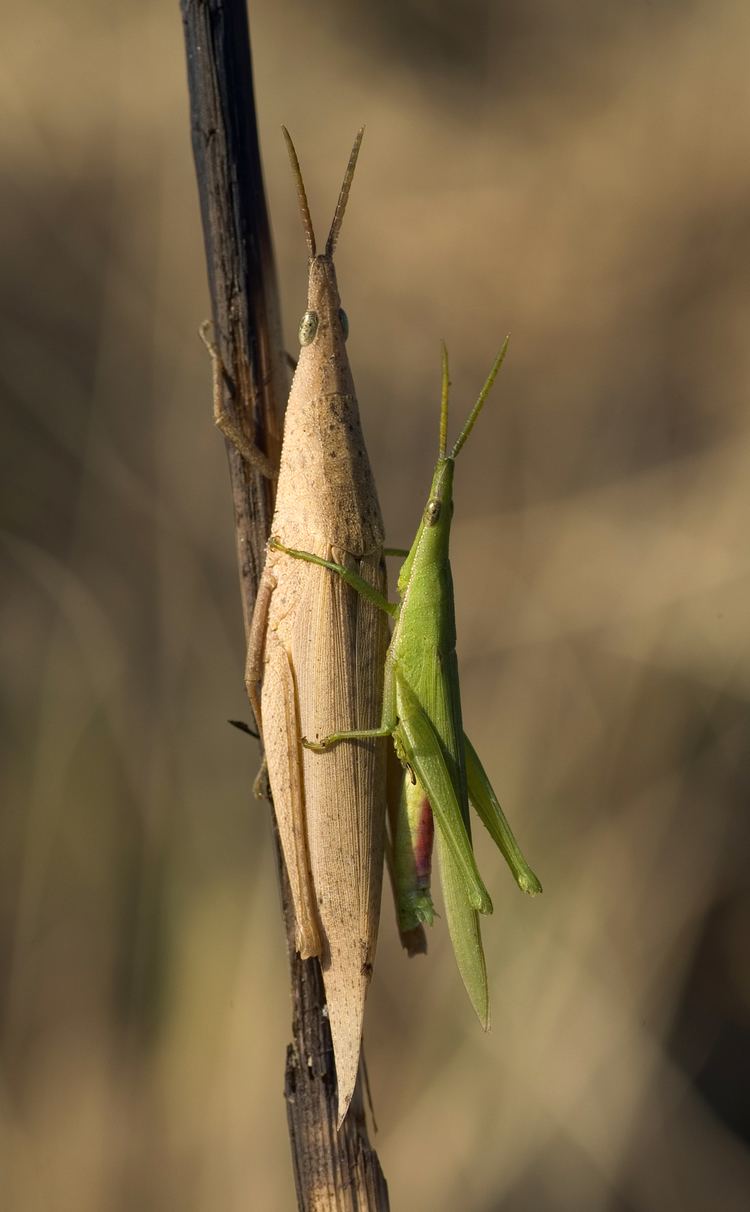Rank Genus | Suborder Caelifera Scientific name Atractomorpha Higher classification Atractomorphini | |
 | ||
Similar | ||
Atractomorpha is a genus in the Pyrgomorphidae, a family of grasshoppers.
Contents
Overview

The genus name Atractomorpha is derived from the Greek language and means "spindle-shaped" or "arrow-shaped". Various families of Orthoptera (including the Acrididae and Lentulidae) include genera whose species have similarly cone-shaped heads, and there are genera within the family Pyrgomorphidae (such as Phymateus and Dictyophorus) that do not have cone-shaped heads, so their superficial appearance may be misleading even for professionals not specifically active in that field.
Biology

Not much is written about the biology of Atractomorpha, but they are herbivores typical of the Orthoptera, so it is understandable that some species seem to be minor pests in gardens and that some, such as Atractomorpha psittacina and Atractomorpha bedeli, are significant pests in rice.

As with many grasshoppers in various families, the males are smaller than the females and ride on them long before copulation. They remain there during the period in which the female achieves sexual receptiveness. Similar strategies are common in vertebrates such as some amphibians, as well as various invertebrates, where the males attempt to keep rivals from mating with the female.

At least some Atractomorpha species also share a habit with various generally sedentary Orthoptera such as some Pamphagidae, of producing their excreta in the form of relatively few, large, elongated faecal pellets, one at a time. As each pellet emerges, they kick it a considerable distance away, using the tibia of one rear leg. This apparently is a strategy for avoiding the attentions of parasitoids and predators that otherwise might have been attracted to the smell of a host midden.
